|
|
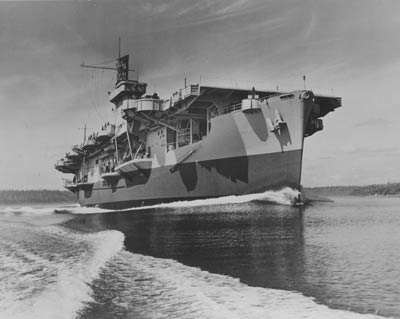 The escort carrier USS Croatan soon after its launching during World War 2. (credit: National Archives, all other photos NASA) |
The voyage of the Old Crow
by Dwayne A. Day
Monday, June 11, 2007
In 1965 the former US Navy aircraft carrier Croatan took a voyage in the Pacific shooting off rockets for NASA (see “Rocket Ship”, The Space Review, April 23, 2007). The Croatan had never been a glamorous ship. She had started life as an escort carrier serving in the Atlantic where she saw some action, but not a lot of glory, and earned the unfortunate nickname Old Crow. After the war she was mothballed for over a decade before being pressed back into service as a civilian-manned aircraft transport. In this role she was nothing more than an odd-looking freighter carrying exotic payload: military jets to various bases around the world.
When NASA decided to undertake a research effort in concert with the International Quiet Sun Year, the agency needed a ship. Although researchers would take measurements all around the world, NASA scientists wanted to launch rockets into the upper atmosphere at different latitudes. This would have been difficult if the rockets were launched from land, because they would have had to be launched from numerous countries. Instead, somebody came up with the idea of using a ship, which could travel north and south in the ocean without seeking special permission.
The Croatan proved to be ideal for this task. It possessed a large flat deck for mounting equipment such as rocket launchers and tracking radars and cameras, and a large enclosed space—the hangar bay—for carrying electronics and other support vans. This was perfect because much of the existing equipment used to support sounding rockets on land was mobile and could simply be taken aboard the ship.
The rocket campaign involved launching dozens of rockets during a short period in the spring of 1965. The Croatan made numerous port stops in South America to load and offload scientists and equipment. The research results were then collated with all the other data that was collected from around the world by American and foreign scientists.
Although a few photographs of the ship and the equipment have been published over the years, the unusual effort has been almost completely forgotten. Recently, with the help of NASA archivist John Hargenreder, I found several dozen photographs of the operation in NASA files. They depict everything from the preparation of equipment at NASA’s Wallops Island facility prior to the voyage to the loading of the Croatan to port visits to actual rocket launches.
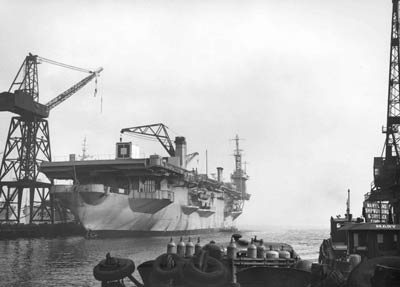 The Croatan, now an aircraft transport, in fall 1964 as it was being prepared for the upcoming NASA sounding rocket cruise. |
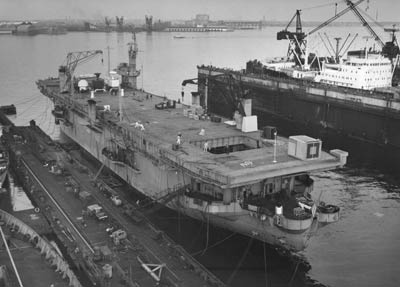 The Croatan in Baltimore. The large cranes on the flight deck were installed when the ship was recalled to service and converted to an aircraft transport. |
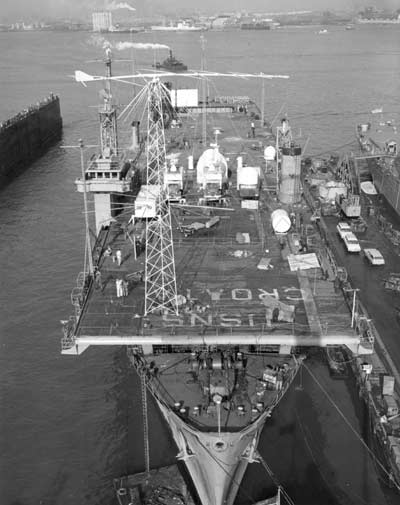 The Croatan during installation of the special equipment for the sounding rocket cruise. Telemetry antennas were installed on the flight deck and radar, cameras and other equipment was also installed. |
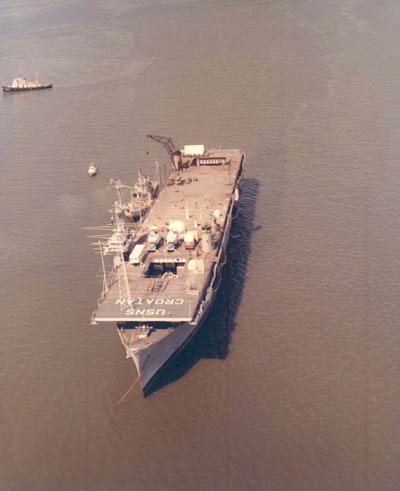 Another view of the Croatan at anchor. The launchers for the Nike-Cajun and Nike-Apache sounding rockets are mounted on either side of the stern elevator. Note the instrumentation trucks on the hangar deck visible through the forward elevator. |
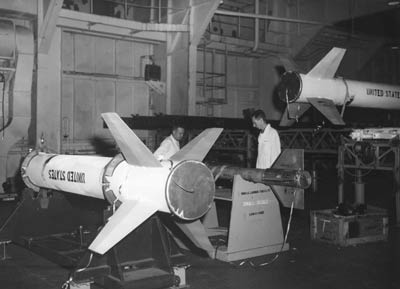 Sounding rockets on the hangar deck. |
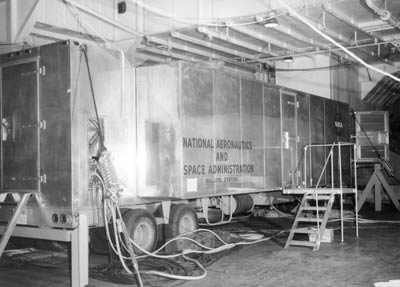 Instrumentation van on the hangar deck. |
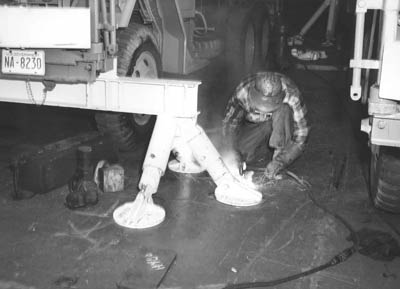 In order to secure the trucks, vans and other equipment on the hangar deck, workers welded holddown structures to the deck. |
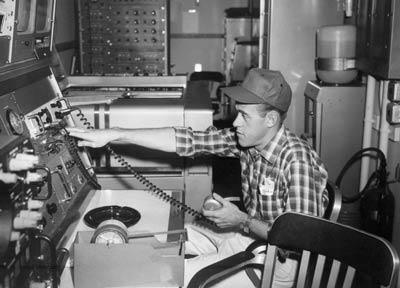 The launch command center aboard the Croatan. |
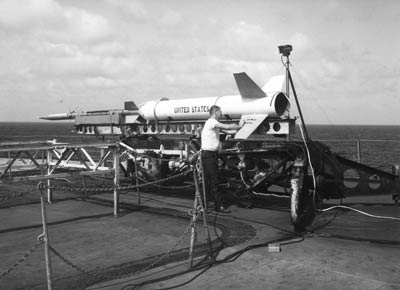 Preparation of a Nike rocket alongside the aft elevator. |
page 2: more photos >>
|
|









